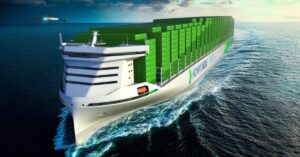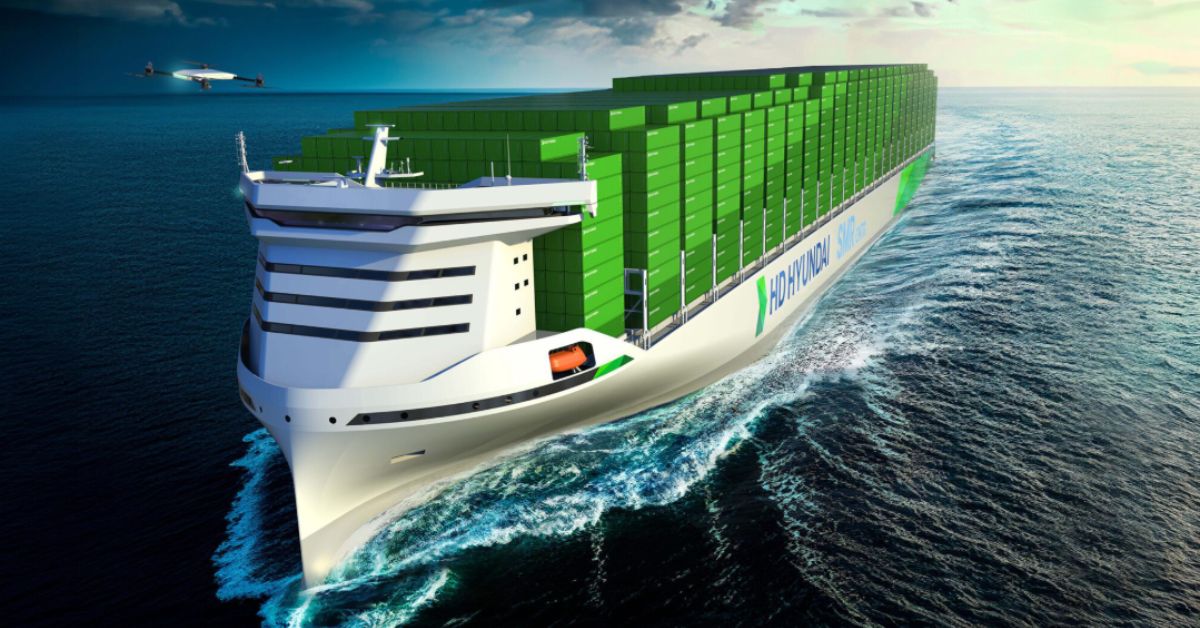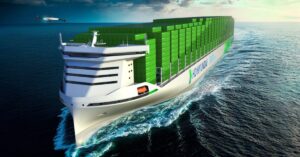
Indian Seafarer Found Dead In Arabian Sea, Another Missing From Merchant Ship
February 14, 2025
U.S Coast Guard Cutter Returns to San Diego With 37,256 Pounds Of Cocaine Worth $275 Million
February 15, 2025

HD Korea Shipbuilding & Offshore Engineering (HD KSOE) revealed its nuclear-powered container ship design which uses SMR or Small Modular Reactor Technology, at the New Nuclear for Maritime Houston Summit.
The 15,000 TEU container ship has received AIP or Approval in Principle from the American Bureau of Shipping.
Its unique design does away with the requirement for a conventional engine exhaust system and fuel tanks, providing more cargo space. It is also fitted with several enhanced safety measures like a marine radiation shielding system with a double tank method with light water and stainless steel.
It also has a supercritical CO2-based propulsion system, made possible by the company’s collaboration with Baker Hughes. The system helps attain five percent improved thermal performance than traditional steam-based systems as the former uses heated CO2 to produce power at lower pressures and temperatures.
Patrick Ryan, Chief Technology Officer of ABS said that nuclear-powered ships can be a game changer in the shipbuilding industry which is leaning towards carbon neutrality.
The latest studies by ABS and Herbert Engineering showed positive outcomes, showing that a 14,000 EU container vessel with two 30 MW fast reactors could remain operational for 25 years without the need to refuel.
ABS Chairman and CEO Christopher J. Wiernicki said that if one considers compliance costs, fuel differentials, and residual value, nuclear ships are cost-competitive and do not produce carbon emissions.
Other giants in the industry are also exploring this path with Lloyd’s Register and CORE POWER collaborating with Maersk for studying nuclear-powered container ships. Newcleo also collaborated with RINA and Fincantieri to develop specialised maritime SMRs.
HD Korea Shipbuilding & Offshore Engineering is trying to push towards commercialization and also building strong partnerships with international regulatory bodies and classification societies. It also aims to develop a marine nuclear business model by 2030. There are plans to construct a marine nuclear demonstration facility at its future technology test centre in Yongin, Gyeonggi Province.
There are many difficulties though, in the implementation of nuclear propulsion technology, such as the need for strong public-private partnerships, insurance models, regulatory frameworks, crew training programs and safety, especially public education about advanced reactor safety systems.
This might be an important step towards marine decarbonisation, with nuclear technology becoming important to achieve the shipping industry’s net-zero emissions targets by 2050.
References: Yahoo Finance, Flows
Source: Maritime Shipping News


